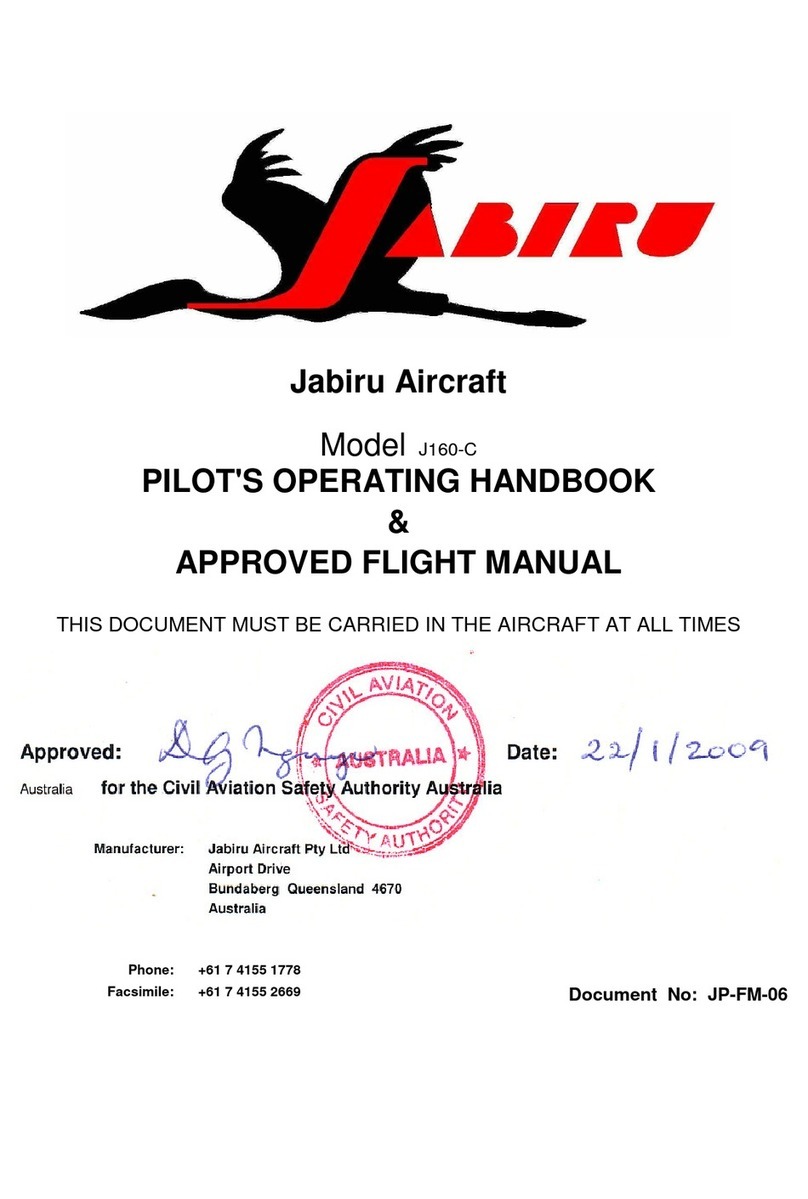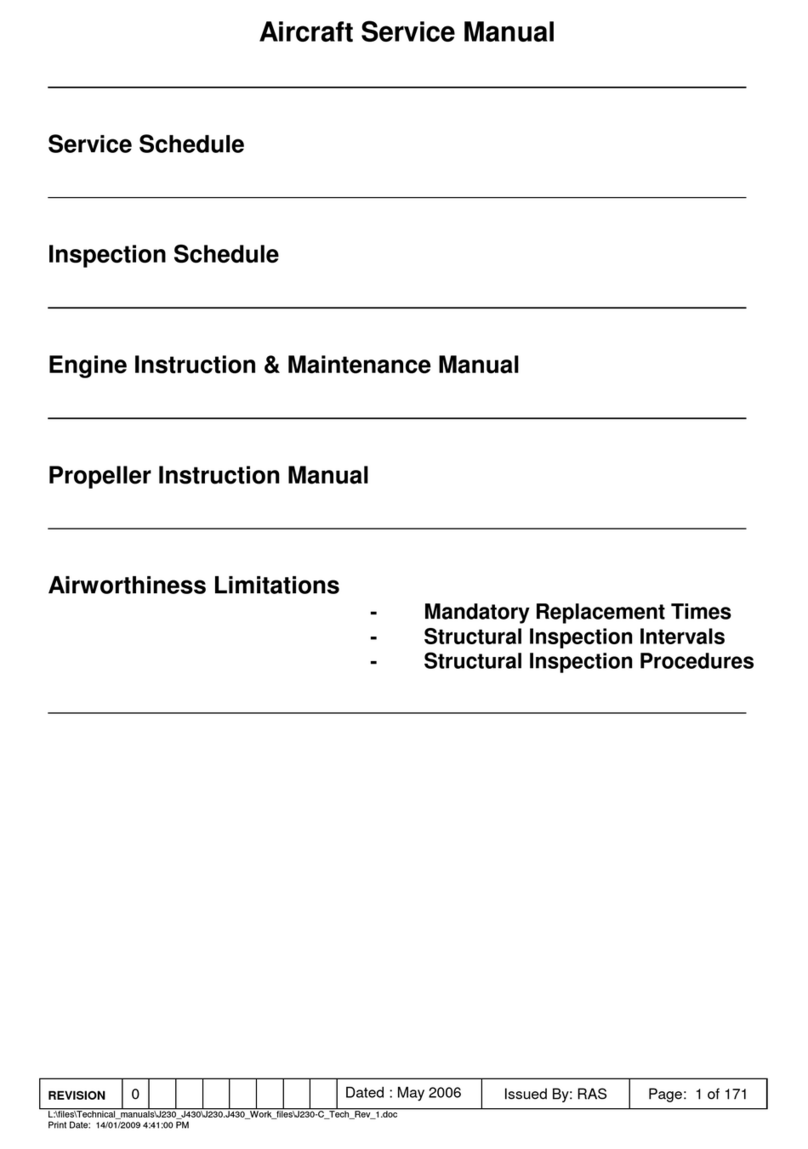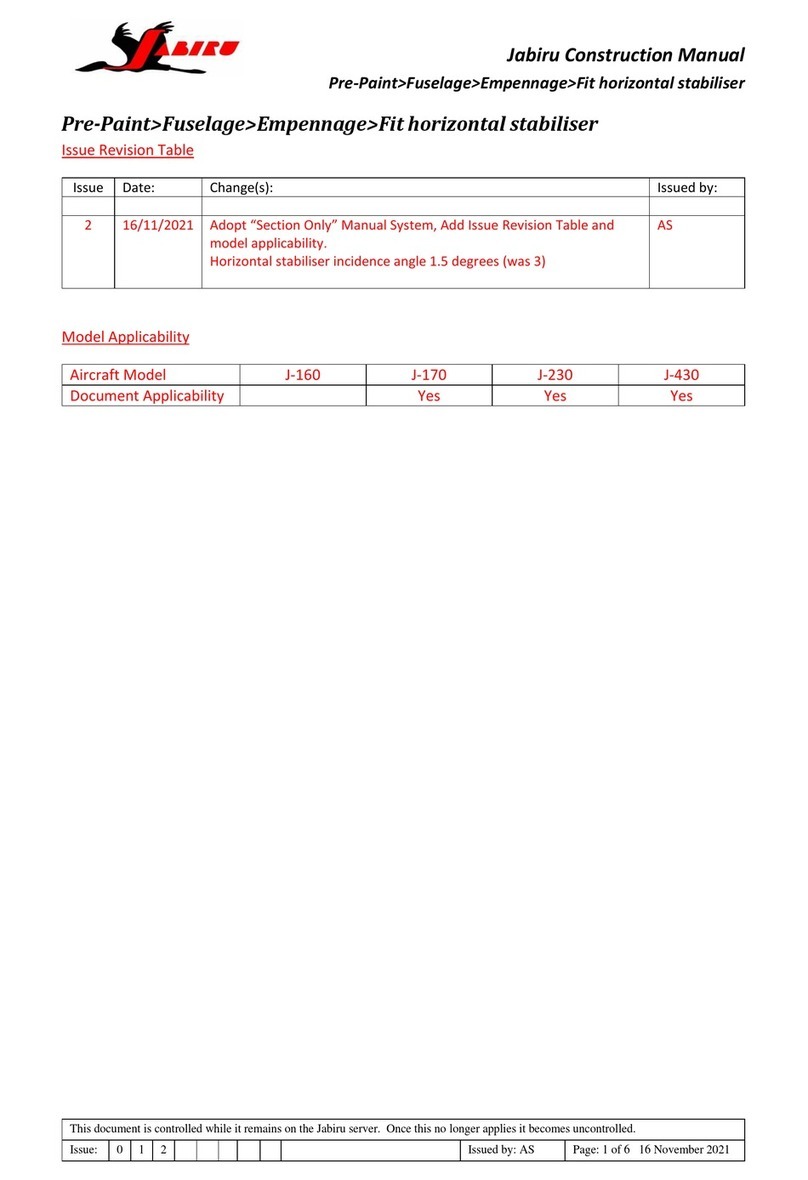Jabiru J450 Constructors Manual
General>Constructors manual
Tuesday, April 6, 2010 7 of 343
Direction references
In all cases throughout this manual when any reference is made to direction (left, right, front,
forward, rear, aft) it is made relative to the pilot‟s point of view, where the pilot is assumed to
be sitting in the pilot‟s seat facing towards the front of the aircraft.
“Lateral” means something that it is oriented from side to side in relation to the aircraft.
“Longitudinal” or “Fore and aft” means something that it is oriented from the front to the
back of the aircraft.
Preparation
We suggest that you get as much preparation done as possible before starting your build.
Start with your workshop: give it a good clean out and consider upgrading the lighting and
power with plenty of strip lights and extra sockets for power tools. Paint the walls and ceiling
a light colour to provide as light a work area as possible. This will also help if you plan to
prepare the aircraft for painting preparation (filling/primer) and also the topcoat if you feel
you are capable of doing so.
In preparation for storing the vacuum-sealed Build Cards that pack many of the small parts
into convenient groups we suggest that you construct a large wallboard that you can place the
Build Cards on, preferably in numerical order (each Card is numbered) –you will find that
this is much easier and more pleasant than sorting through a box or pile of Build Cards!
For items such as fairings and instrumentation prepare as much protected shelf space as you
can find (some shelving under a workbench can be particularly useful in this instance) and
also make a vertical bin in a cooler corner of the workshop to stand long items like elevator,
rudder and flaps in while building the relevant parts of the aircraft. Reserve an out-of-the-way
area for windows and other fragile parts.
In our factory we use large mobile bench/racks that contain all of the parts for an aircraft and
that rack stays with that aircraft all the way through production.
If you're going to do any painting, try to keep equipment and parts off the floor as much as
possible so that you can sweep/vacuum/hose the place out thoroughly in order to minimise
dust before you start any painting.
Get all of the tools and equipment on the list that starts on the next page.
Read this manual from start to finish to familiarise yourself with the work to come.
Consider getting extra insurance cover for your kit during the build to cover any risks
(fire/damage/theft, etc). Most aircraft insurers will quote for this and many builders consider
that the cost is worth it for the peace of mind that it brings.
Cold climate considerations
If you are building in a colder climate/during winter, some extra heating and insulation in
your workshop will help, as well as keeping the humidity levels up to acceptable levels for
epoxy work. Clearly, all workshops are different and your build inspector will advise.
Get a large roll of bubble wrap packaging sheet (1.5m x 15m) from your local garden centre
or packaging company (usually cheaper). In low temperature environments you will use this
to create an insulated tunnel by draping it over the work you've bonded/flocked and, with the
careful application of warm air from a fan heater, you'll easily achieve the 24°C (or so) you
need for a good epoxy cure.





































